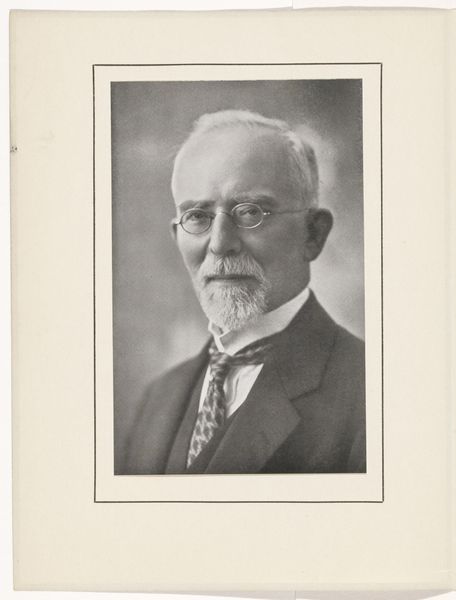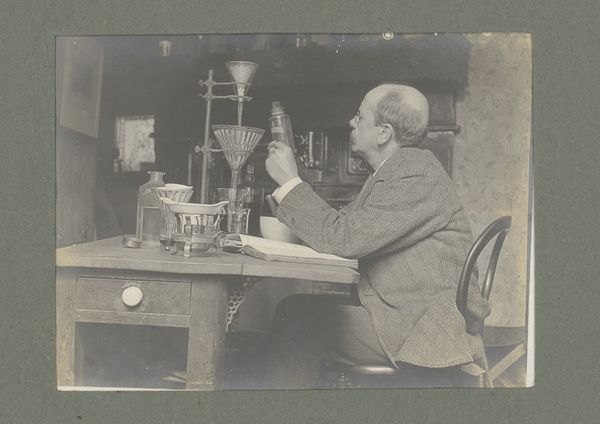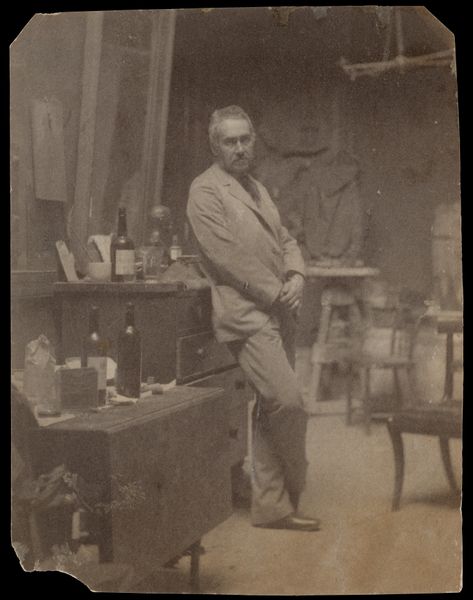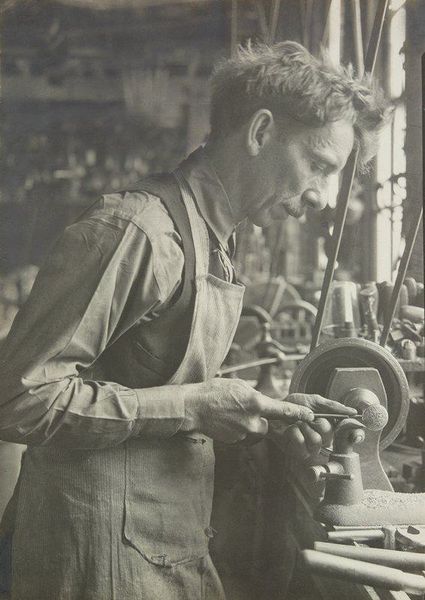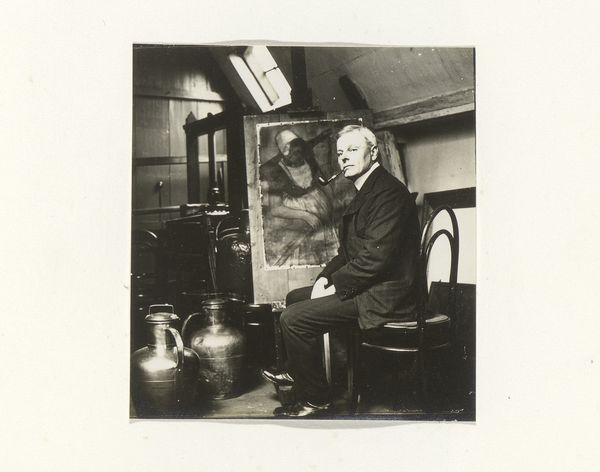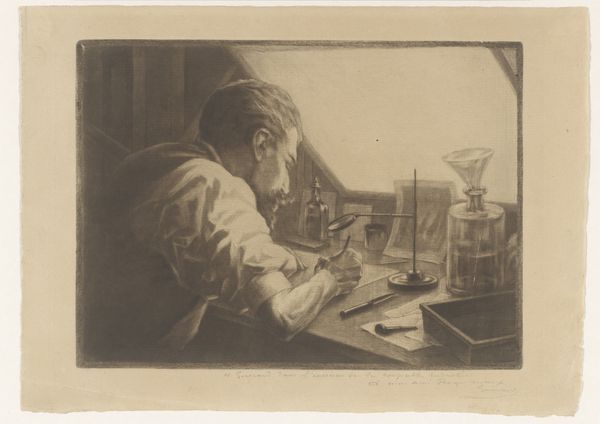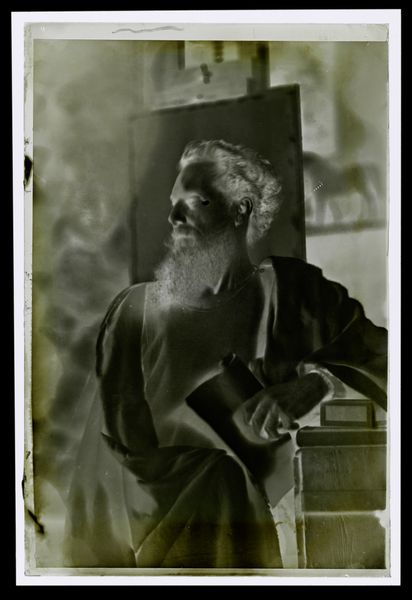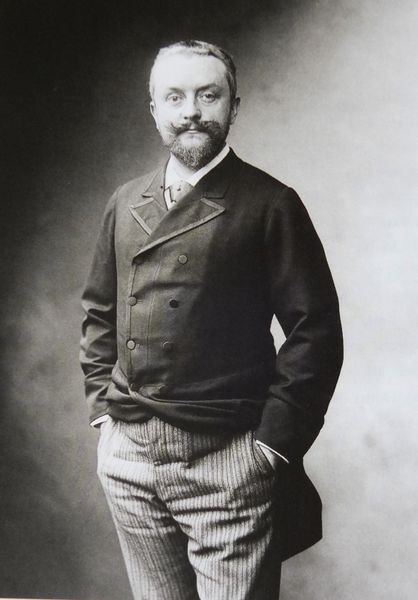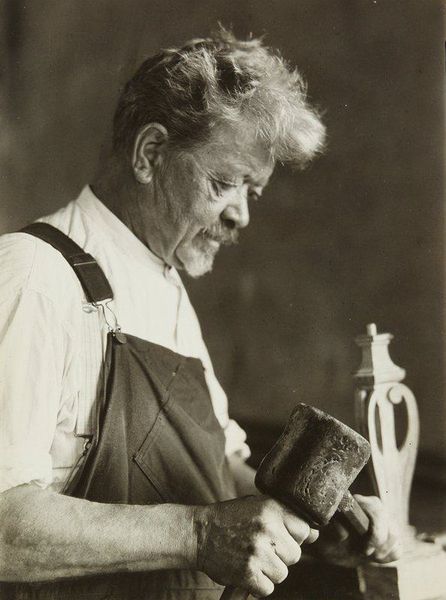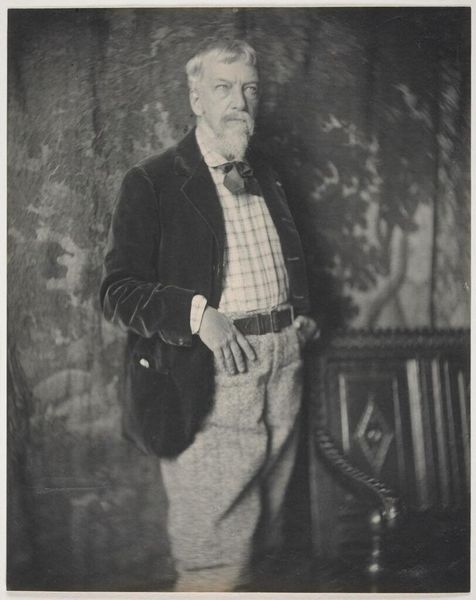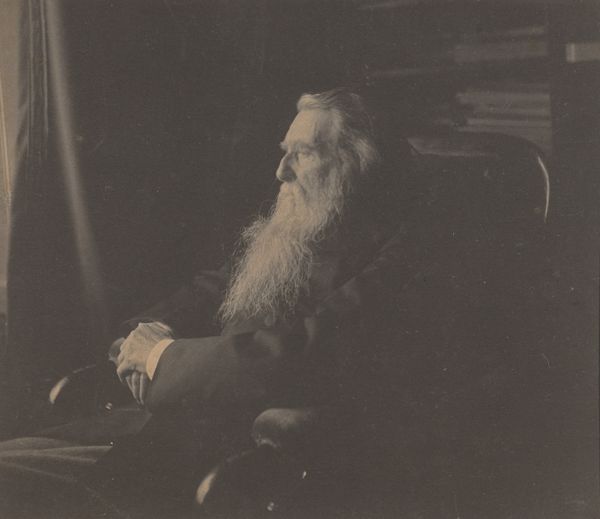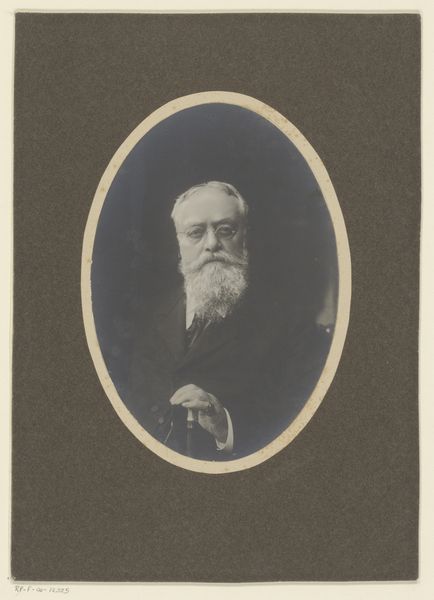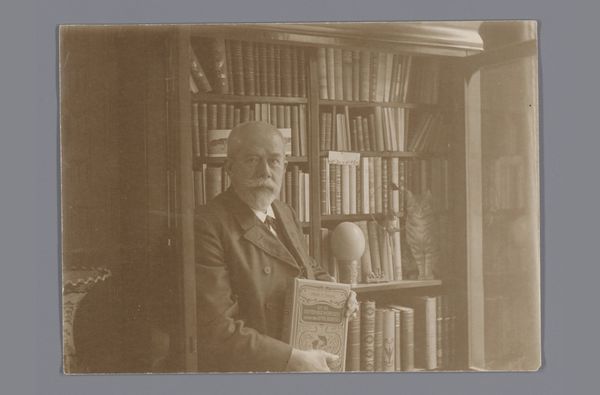
Dimensions: image: 229 x 169 mm
Copyright: © Estate of Albert Renger-Patzsch / DACS 2014 | CC-BY-NC-ND 4.0 DEED, Photo: Tate
Editor: This is Albert Renger-Patzsch's photograph, "Saxon Hosiery Weaver at a Handloom." The texture of the weaver’s clothing and the loom itself are so striking. What can you tell me about this work? Curator: The photograph highlights the process of textile production, focusing on the weaver, his labor, and the means of production. The materials themselves - the threads, the metal loom, and the garments they produce - are central, challenging the hierarchy between art and craft. What does the image suggest to you about the relationship between man and machine? Editor: It appears to be a collaboration. He guides it, and it enables his craft. Thank you, I hadn't considered how the labor is elevated through his portraiture. Curator: Precisely. By emphasizing the materiality and the labor involved, Renger-Patzsch compels us to consider the social and economic context of this craft. I think we can both appreciate the historical value.
Comments
tate 7 months ago
⋮
http://www.tate.org.uk/art/artworks/renger-patzsch-saxon-hosiery-weaver-at-a-handloom-p79954
Join the conversation
Join millions of artists and users on Artera today and experience the ultimate creative platform.
tate 7 months ago
⋮
Saxon Hosiery Weaver at a Handloom is a black and white, three-quarter length photographic portrait of a bearded and bespectacled man carefully posed before a weaving loom with one hand on his hip and another gripping the machine’s handle. His body is angled towards the left, while his face turns to directly confront the viewer’s gaze. He is wearing an apron that indicates his profession, confirmed by the photograph’s title. Without the title, the photograph offers little visual information about the identity of its subject. Instead, the viewer’s attention is drawn to details rendered clearly and sharply within the image – round reflective glasses, wiry beard, white threads stretched tightly around the loom, the play of shadows in the fabric drapery – details that become so insistent in Renger-Patszch’s photographs as to form an ‘inner’ composition within the pictorial frame (Donald Kuspit, Albert Renger-Patzsch: Joy Before the Object, New York 1993, p.69). Renger-Patzsch used photography to isolate, frame and focus attention on details of the material world. By supplementing human vision in this way, his photographs encourage the viewer to ‘look at things from a new vantage point’ and take increased ‘joy’ in seeing the world of objects anew (Renger-Patzsch 1928, p.647).
